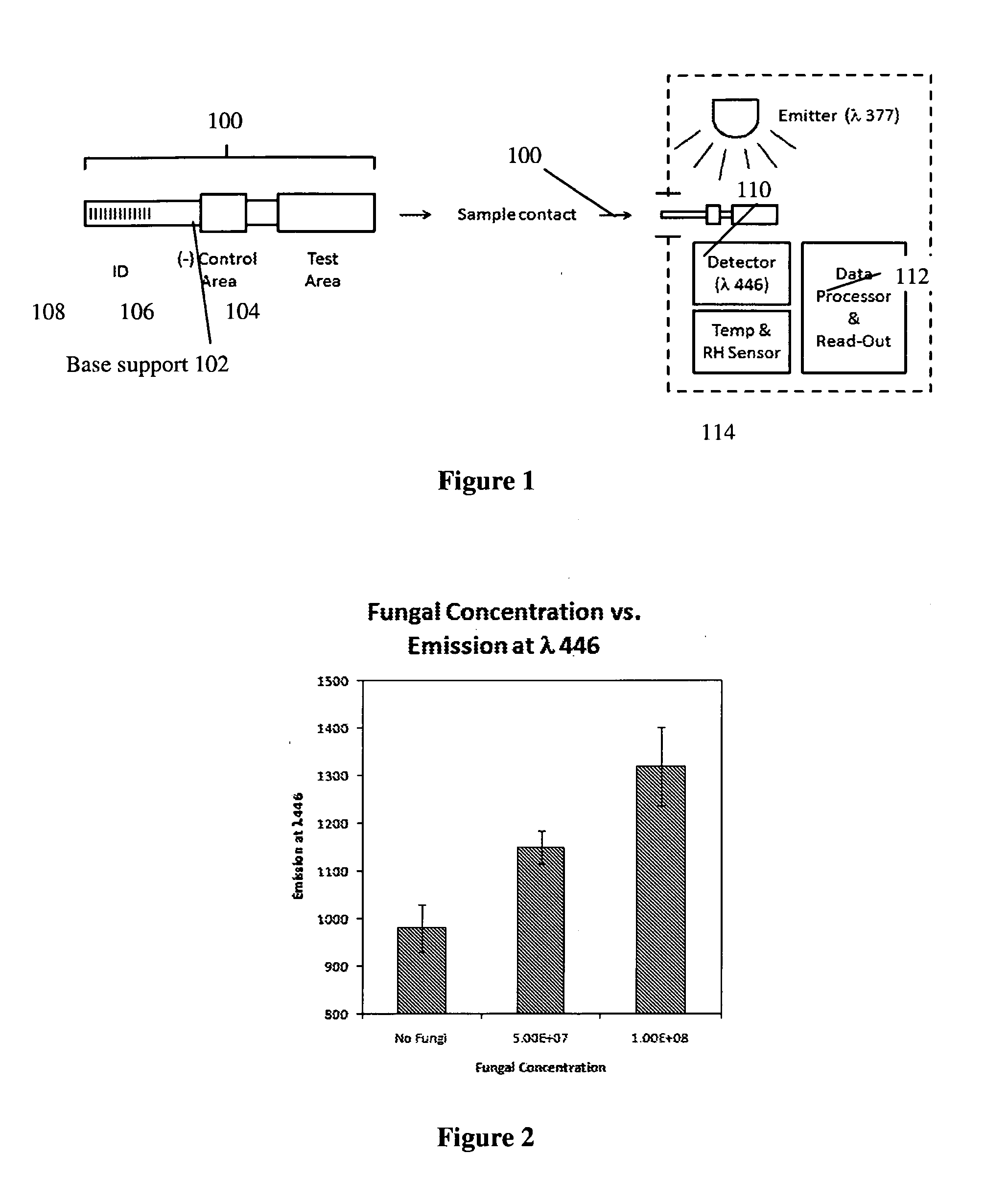Methods and systems for detection of microbes
a detection method and microbe technology, applied in the field of methods and systems for detection of microbes, can solve the problems of affecting the quality of life of the organism, the damage of cultural heritage materials such as paintings, statues, books,
- Summary
- Abstract
- Description
- Claims
- Application Information
AI Technical Summary
Benefits of technology
Problems solved by technology
Method used
Image
Examples
example 1
[0162]The following example shows the direct correlation between the concentration of fungal contamination on a surface and the amount of light emitted from a test disc infused with a conjugate of a fungal enzyme substrate and 4-methylumbelliferone. Paper discs (0.5 cm2, Whatman, Ltd.) were soaked with 10 μl of 200 μM 4-methylumbelliferyl-N-acetyl-β-D-glucosaminide (MUF NAG) and allowed to dry. 5 μl volumes of fungal spore solutions (Aspergillus niger in H2O) of various concentrations were pipetted onto the paper discs. Each paper disc was immediately transferred to individual wells on a standard 96 well plate. The plate was incubated at 30° C. for 10 minutes in the dark. Fluorescence generated by each disc was measured with a Gemini XPS spectrofluorimeter. Three replicates were conducted for each concentration of spores and were averaged. The results, shown graphically in FIG. 2, show that the intensity of fluorescence emitted from each sample disc directly correlates with the conc...
PUM
| Property | Measurement | Unit |
|---|---|---|
| time | aaaaa | aaaaa |
| length | aaaaa | aaaaa |
| width | aaaaa | aaaaa |
Abstract
Description
Claims
Application Information
 Login to View More
Login to View More - R&D
- Intellectual Property
- Life Sciences
- Materials
- Tech Scout
- Unparalleled Data Quality
- Higher Quality Content
- 60% Fewer Hallucinations
Browse by: Latest US Patents, China's latest patents, Technical Efficacy Thesaurus, Application Domain, Technology Topic, Popular Technical Reports.
© 2025 PatSnap. All rights reserved.Legal|Privacy policy|Modern Slavery Act Transparency Statement|Sitemap|About US| Contact US: help@patsnap.com

